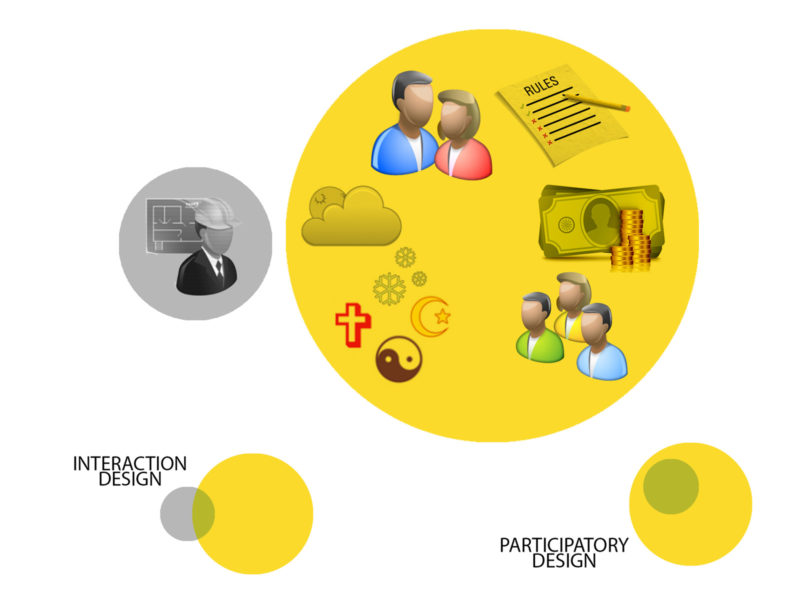Participatory Design; A new approach to regenerate the public space




Participatory Design (P.D) is the model of direct involvement of different social groups in the design from products or functional tools to environments, social institutions and businesses. Diverse collection of practices has been developed to support this direct involvement by P.D. People are invited to participate during different phases of an innovative and creative process; from initial exploration to problem definition and defining the problem and creating ideas for each solution. During development, they help evaluate proposed solutions.
P.D answers questions about users and their tasks and goals, then help users to make decisions. P.D is characterized as a maturing area of research and as an evolving practice among designer. Architecture as a professional design are social constructs and the way for humans to consider the physical world in which they exist, and as social constructs, both reflect and shape the culture in which they arise.
A participatory approach is used to investigate the nature of design discussion during the early stages of design. It is shown that the ideology of inclusive design is similar to the ideology of P.D. The ability of language-use to reveal user preference is explored through the analysis of architect–user conversations.
Defining a flexible framework to consider the social contexts can lead process design based on participation. Participation should occur in every aspect of design. Methods for P.D include techniques for involving future users, people who use and experiment the environment, in all parts of the development process:
- determining design objectives on social (not only technical) bases;
- analysis of the current situation and co-construction of problem formulation; conceptualization of design, designing and evaluating possible design solutions;
- implementing changes including training people for new practices;
- evaluation, maintenance and ongoing improvements;
- Iterative design.
“The process allowed cross-discipline participation from planners, architects and industrial designers, which focused on collaboration and the sharing if ideas and stories, as opposed to ridged and singular design outcomes. “(Kuiper, 2007)
Posted in : Design Method
Leave a Reply
Don't miss the latest Architecture knowledge
Follow us on Instagram
Categories
- Awards (4)
- Design Method (1)
- Products (1)
- Publishing (2)
Attractive section of content. I just stumbled upon your site and in accession capital to assert that I get actually
enjoyed account your blog posts. Any way I will be subscribing to your augment and even I
achievement you access consistently rapidly.
Also visit my website :: sbobet
many thanks